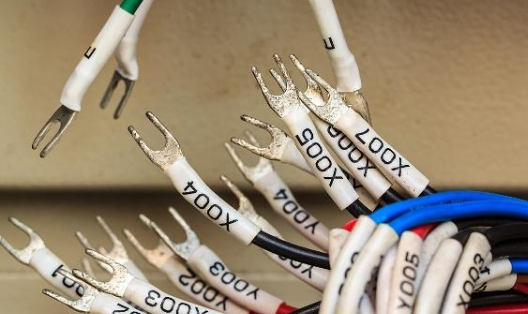Is the connection effect on the electrical connector good?
This article first introduces the selection conditions of electrical connectors, which includes detailed descriptions of electrical parameters, safety parameters and mechanical parameters. Then, an important mechanical parameter of the electrical connector, termination, is analyzed in combination with the actual production conditions.
The crimp connection method in the termination is explored with examples, and the effect of the connection is tested from the crimp depth and the crimp position. Explained, the installation of the electrical connector was briefly introduced at the end. By controlling the variable factors of the connector, the electrical connection effect can be made better and more stable.
Connectors are electromechanical components that connect electrical circuits, and can also be called plugs and sockets. They are widely used in various electrical circuits and play a role in connecting or disconnecting circuits. There are many types of connectors and a wide range of applications. There are different classification methods of connectors, according to frequency, high frequency and low frequency connectors; round and rectangular connectors according to appearance; according to use, there are connectors for printed boards, connectors for cabinets, and audio equipment. Connector, power connector, special purpose connector, etc.
The basic performance of connectors can be divided into three categories: mechanical performance, electrical performance and environmental performance. Mechanical performance In terms of connection function, insertion force is an important mechanical property. The main electrical properties include contact resistance, insulation resistance and electrical strength. Common environmental properties include temperature, humidity, salt spray, vibration and shock resistance.
The correct selection and use of electrical connectors is an important aspect of ensuring circuit reliability. The electrical parameters of the connector itself are the first issues to consider when selecting a connector, and also include the safety and mechanical parameters of the connector.
Electrical parameters:
1. Rated voltage: Also called working voltage, it mainly depends on the insulation material used by the connector and the distance between the contact pairs. Certain components or devices cannot perform their intended function when they are below their rated voltage.
2. Contact resistance: The contact resistance refers to the resistance generated by the two contact conductors at the contact portion. The contact resistance of the connector refers to the contact resistance, which includes the contact resistance and the contact resistance of the conductor.
3. Shielding: In modern electrical and electronic equipment, the density of components and the related functions between them are increasing, which places strict restrictions on electromagnetic interference.
4. Rated current: Also known as working current, the connector can work normally when the rated voltage is lower than the rated current. During the design of the connector, the thermal design of the connector is used to meet the rated current requirements. When a current flows through the contact pair, the contact pair will generate heat due to the presence of the conductor resistance and contact resistance. At a certain limit, the insulation of the connector will be destroyed and the contact will soften the surface plating, causing failure. Therefore, its rated current actually limits the temperature rise inside the connector to not exceed the design's specified value. Therefore, the multi-core connector should be derated. The more cores, the larger the reduction.
Safety parameters:
1. Flammability: The connector should not only be able to prevent ignition, but also to self-extinguish in a short time once it is ignited.
2. Insulation resistance: It refers to the resistance value that appears when a voltage is applied to the insulation part of the connector, so that a leakage current is generated on the surface of the insulation part. It is mainly affected by factors such as insulation materials, temperature, humidity, and fouling.
3, withstand voltage: refers to the critical voltage between the insulated parts of the contact pair or between the insulated part and the ground, within a specified time can withstand higher than the rated voltage without causing breakdown. It is mainly affected by the geometry of the contact pair spacing and creepage distance, the insulator material and the ambient temperature and humidity, and atmospheric pressure.

Mechanical parameters:
1. Number of contact pairs and pinhole: Firstly, the number of contact pairs can be selected according to the requirements of the circuit. At the same time, the size of the connector and the total separation force must be considered.
2. One-leg separation force and total separation force: The contact pressure in the connector is an important indicator, which directly affects the size of the contact resistance and the amount of wear of the contact pair.
3. Anti-vibration, shock, and collision: The electrical continuity of the contact pair during the vibration, shock, and collision of the connector under the specified frequency and acceleration conditions is mainly considered.
4. Mechanical life: The life of the connector refers to the life of the plug, which is usually 500 to 1000 times.
5. Connection method: The connector is generally composed of a plug and a socket. The plug is also called a free-end connector, and the socket is also called a fixed-end connector. The connection and disconnection of the circuit is achieved through the plugging and disconnecting of the plug and the socket, so various connection methods of the plug and the socket have been produced. For circular connectors, there are mainly screw-type connections, bayonet-type connections and bullet-type connections.
6. Termination method: Termination method refers to the connection method between the contact pair of the connector and the wire or cable. Proper selection of termination methods and proper use of termination technology is also an important aspect of using and selecting connectors.
If you want to know more, our website has product specifications for the electrical connector, you can go to ALLICDATA ELECTRONICS LIMITED to get more information

